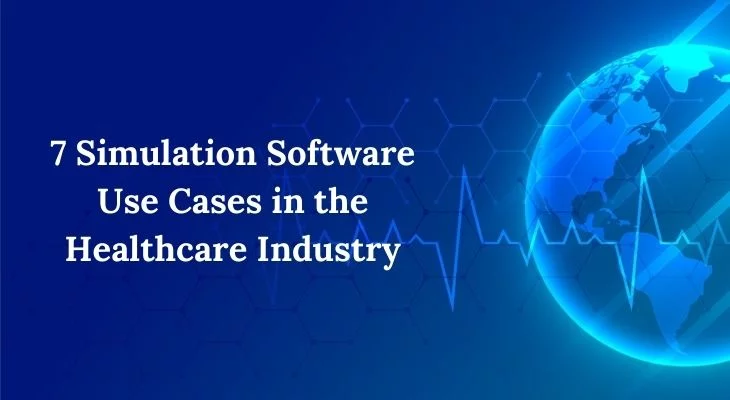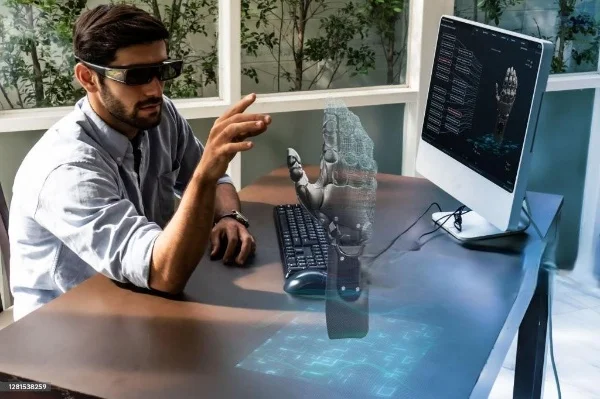Simulation software is an approximate imitation of a real-life phenomenon using mathematical formulas. The program enables users to observe the process through a system. It then enacts the operation without performing the particular tasks. The history of simulation takes us back to World War 2. Stanislaw Ulam and Jon Von Neumann solved the issues in the hydrogen bomb design. Ulam developed the "Monte Carlo'' approach to solving problems by applying mathematical physics. Simulation software is often associated with video games. Yet, it has an impact on Automotive, Manufacturing, and the Healthcare Industry.
Here we will discuss the use cases of Simulation Software in the Healthcare Industry.
Here are 7 Simulation Software Use Cases in the Healthcare Industry:
The company began in the year 1941 by Norman Eckley. They developed and supplied agricultural-related products. They also developed teaching aids for an advanced educational experience.
In 1999, Nasco absorbed companies Simulaids and Life/form. They developed moulage kits, CPR manikins, provided training solutions to prepare first-time responders. The subsidiary is now known as Nasco Healthcare, aka eNasco.
They provide digital health solutions for nursing and healthcare. The solutions help with scenario building, skills training, and specialized training.
eNasco has digital health solutions such as:
- Patient Communication Simulator (PCS), ALEX, helps in communication training with patients. The simulator enables instructors to program learning objectives for training.
- Body Interact mimics real medical cases on the virtual patient simulator. It helps healthcare professionals enhance their clinical reasoning and decision-making skills.
It provides comprehensive feedback. It also has expert-reviewed clinical scenarios for in-patient, out-patient and prehospital care training.
eNasco's Casualty Care Rescue Randy trains first-time responders for emergency cases. TERi is a senior care trainer for professionals dealing with elderly patients.
These high-level simulation products are the latest as of February 1st, 2021.
Kb Port
Kb Port provides multimedia software solutions across various industries. The Pittsburg-based technology company's core objectives are in the medical simulation space.
The company's Simplicity Solution provides medical dispensing solutions. SimEMR (Simulated Electronic Medical Record) is a web-based and interactive solution.
With MedsManager Software, SimEMR administrates medication for a patient. It also enables medical students to navigate health records.
Medical institutions or individuals use MedSkills Enterprise and MedSkills Local. It helps them learn the critical process in medication administration scenarios.
Kb Port's Programmable Patient Monitor is another simulation-based education solution. It is currently under development.
The solution would allow educators to set and save the program with specific vitals. It will help create a practical learning experience for medical students.
Oxford Medical Simulation
Simulated software in healthcare has transformed learning and training experiences for medical students.
Oxford Medical Simulation (OMS) is a virtual reality platform. It develops simulated learning and practice in a safe environment.
OMS uses VR headsets filled with realistic scenarios. That helps students understand and practice based on their skillset.
It allows educators to assess a student's performance and provide feedback.
Here are VR learning solutions offered by Oxford Medical Simulation:
- OMS Nursing a realistic nursing training via VR simulation. It helps registered nurses, nurse practitioners, and nursing students.
- OMS Medical allows customizable learning with or without a faculty member involved. The faculty member later assesses the practice to improve the students' competence.
- OMS Interprofessional enables learners to interact and communicate based on a realistic scenario. It allows students worldwide to learn from each other's experiences. It also provides insight into different medical situations.
- OMS Distance is an online distance learning program for medical students worldwide. Students can access simulation scenarios either on VR or on a screen.
International Pediatrics Simulation Society
The International Pediatrics Simulation Society is a virtual global community of medical professionals. 11 multinational pediatric medical professionals founded the Society.
Now, the membership has grown with practitioners in over 30 countries.
Simulation-based innovations and research helped develop a sustainable network of professionals. They work towards improving infant and child care.
They helped in developing pediatric simulations in Sub-Saharan Africa, Southeast Asia, and India.
Emergency Triage Assessment and Treatment (ETAT) course is IPSS's initiative with WHO. It educates healthcare workers to determine and identify emergency and priority cases.
IPSS works with the Malawi Ministry of Health. They aim to improve the quality of life for Malawian citizens.
Educating the Malawians on how to prevent and cure diseases with the help of medicines.
IPSS works with the Pediatric Simulation Training and Research Society of India. They aim to promote simulation-based interventions to improve pediatric care in India.
MedVision
MedVision is a Japanese company that designs and manufactures medical simulators. The company began in 2014 by EIDOS and DNAFORM with an R&D partnership with RIKEN.
MedVision combines software and hardware technologies. It provides high-quality medical simulation pieces of equipment.
They are employing more than 150 developers to help them design and invent new solutions.
Their medical simulator products include:
-
- Leonardo:
It is an adult male Human Patient Simulation. It is designed to train specialists to solve medical complications. - Arthur & Mia:
These pediatric simulators help professionals deal with younger patients from the pediatric ward. Arthur represents patients between the ages of 5 & 8, and Mia represents infants. - AngioVision:
Along with healthcare simulation manikins, MedVision also designs simulators for endovascular procedures. It is a software healthcare simulator with instruments that help train medical students.
- Leonardo:
MedVision has had sales operations in Asian and European markets since 2015. In 2018, it also launched direct sales in the USA market.
mentice
mentice is a healthcare simulation company. It develops software and hardware solutions for endovascular therapies.
Established in 1999, it now has 50 medical simulation patents and 30 training procedures, and 50% of the global market share.
Their simulation software helps healthcare professionals learn to adapt skills and become experts.
The simulation software helps healthcare professionals practice over 42 medical techniques. It also helped them access over 520 medical cases.
They also develop and innovate clinical simulation solutions in neurovascular and cardiovascular therapies.
mentice recently partnered with Siemens Healthineers, Corindus Vascular Robotics, Philips, and Laerdal. They developed VIST and Laerdal SimMan Vascular.
VIST enables healthcare professionals to rehearse procedures on virtual patients.
mentice's VIST simulation integrates with Laerdal's SimMan for immersive training solutions. It helps healthcare professionals deal with all patient care procedures.
MedAffinity
MedAffinity is an innovative electronic health records (EHR) company. It develops software simulation solutions to train next-generation healthcare professionals.
Certified in 2012, the company began working with Tallahassee Community College. They developed EHR software solutions for academic purposes.
MedAffinilty in 2015 collaborated with CAE Healthcare's LearningSpace. They aim to combine their simulation solutions with MedAffinity's EHR platform. It will help educate aspiring healthcare professionals with realistic training.
According to Dr. Robert Amyot, President of CAE Healthcare, "MedAffinity's dual experience in both clinical and educational environments is invaluable as it delivers exactly what both educators and learners need quickly, seamlessly, and without nonessential steps."
Including MedAffinity EHR in curriculums help learners gain applicable information. The simulation software stores real-time information from the healthcare industry.
Conclusion:
The global healthcare simulation market evaluated at USD 1.9 billion in 2020. They foresee the same may reach a USD 3.7 billion market size by 2025. It has a compound annual growth rate of 14.60% from 2020 to 2025.
The healthcare industry has seen technological advancements with simulation software solutions. There has been significant growth in demand for healthcare simulation training.
Hence there has been a constant development for more software solutions.
You May Also Like to Read:
Augmented Reality and Digital Marketing: The Way Forward
Real Life Examples of Virtual Reality in Financial Services
7 Digital Twin Use Cases
How Can Simulation Software Be Used In Healthcare





